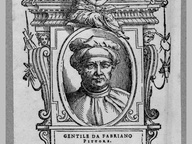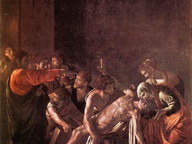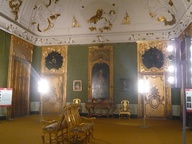Four Rivers Fountain
Roma, Piazza Navona
- Artist: Gian Lorenzo Bernini
- Location: Roma, Piazza Navona
- Date: 1648 - 1651
- Address: Piazza navona
DESCRIZIONE:
The urban setting of this fountain, which is the work of Gian Lorenzo Bernini, consists of a space – that of Piazza Navona – which has evolved through numerous different interventions. These have been superimposed and integrated through the ages and this has left historical traces which are still visible in the architecture which surrounds the piazza. The ancient stadium of Domitian (which was built between 81 and 86 A.D.) is still clearly visible in the formal and dimensional setting of the modern square.The fountain, which was commissioned by Pope Innocent X Pamphili (1644-1655), plays a central role in the urban building plan of the Pope, who saw Piazza Navona as the most representative place in the city for the glorification of his Pontificate. Infact the piazza was subject to an impressive restructuring campaign that included the construction of Palazzo Pamphili as well as the Church of Saint Agnes in Agony. From the earliest years of his Pontificate, Innocent X, had planned to built the most majestic monumental fountain in all Rome in the centre of this piazza (in the place of the horse trough which stood there at the time) and the first work that was commissioned is recorded in a papal commission dated the 11th of April 1647 in which the Pope decrees that the water from the Vergine aqueduct should be brought to Piazza Navona before it reached the Trevi Fountain and that Francesco Borromini should be the architect charged with the execution of the work. However Gian Lorenzo Bernini replaced Borromini in 1648 after he presented the Pope with a silver model of his project for the fountain which was immediately approved. The artist then carried out a number of different designs and models, some of which are still conserved, and when he actually began the construction of the monument he used, for the execution of the project, his trusted team of assistants, which was comprised of sculptors and stonemasons working under his direct control.The elements in travertine, which were completely carved in situ, were entirely done by a group of masons headed by Giovanni Maria Fracchi: though some sources suggest that Bernini himself personally finished some parts of the rocks where there are animals and vegetation. The impromptu way in which Bernini worked is well known: indeed often the result is the fruit of this combination of ideas and planning that are embodied in his work through his complete mastery of building and carving techniques. The statues of the Rivers are carved in marble: the Nile (by Giacomo Antonio Fancelli), the Ganges (by Claude Poussin), the Danube (by Antonio Raggi), the River Plate (by Francesco Baratta) and the Papal Coats of Arms were all carved in studio, and subsequently assembled and positioned on the rocky background that makes up the base for an Egyptian Obelisk carved out of granite that was crowned with a bronzed dove, the symbol not only of peace, but also of the Pamphili family.The five pieces of the obelisk had been found lying in the Circus of Maxentius and were transferred to Piazza Navona, recomposed and erected on the rocks in 1649. The iconography of the fountain, which is complex and has been interpreted in many different ways, predominately regards the global domination of the Papacy, which is represented by the four great rivers that cross the continents that were known at the time (Europe, America, Africa and Asia). On the 12th of June 1651 the fountain was inaugurated to the great excitement and wonder of the patron and other observers, as is reported by the chronicles of the day and the accounts of travellers.
The urban setting of this fountain, which is the work of Gian Lorenzo Bernini, consists of a space – that of Piazza Navona – which has evolved through numerous different interventions. These have been superimposed and integrated through the ages and this has left historical traces which are still visible in the architecture which surrounds the piazza. The ancient stadium of Domitian (which was built between 81 and 86 A.D.) is still clearly visible in the formal and dimensional setting of the modern square.The fountain, which was commissioned by Pope Innocent X Pamphili (1644-1655), plays a central role in the urban building plan of the Pope, who saw Piazza Navona as the most representative place in the city for the glorification of his Pontificate. Infact the piazza was subject to an impressive restructuring campaign that included the construction of Palazzo Pamphili as well as the Church of Saint Agnes in Agony. From the earliest years of his Pontificate, Innocent X, had planned to built the most majestic monumental fountain in all Rome in the centre of this piazza (in the place of the horse trough which stood there at the time) and the first work that was commissioned is recorded in a papal commission dated the 11th of April 1647 in which the Pope decrees that the water from the Vergine aqueduct should be brought to Piazza Navona before it reached the Trevi Fountain and that Francesco Borromini should be the architect charged with the execution of the work. However Gian Lorenzo Bernini replaced Borromini in 1648 after he presented the Pope with a silver model of his project for the fountain which was immediately approved. The artist then carried out a number of different designs and models, some of which are still conserved, and when he actually began the construction of the monument he used, for the execution of the project, his trusted team of assistants, which was comprised of sculptors and stonemasons working under his direct control.The elements in travertine, which were completely carved in situ, were entirely done by a group of masons headed by Giovanni Maria Fracchi: though some sources suggest that Bernini himself personally finished some parts of the rocks where there are animals and vegetation. The impromptu way in which Bernini worked is well known: indeed often the result is the fruit of this combination of ideas and planning that are embodied in his work through his complete mastery of building and carving techniques. The statues of the Rivers are carved in marble: the Nile (by Giacomo Antonio Fancelli), the Ganges (by Claude Poussin), the Danube (by Antonio Raggi), the River Plate (by Francesco Baratta) and the Papal Coats of Arms were all carved in studio, and subsequently assembled and positioned on the rocky background that makes up the base for an Egyptian Obelisk carved out of granite that was crowned with a bronzed dove, the symbol not only of peace, but also of the Pamphili family.The five pieces of the obelisk had been found lying in the Circus of Maxentius and were transferred to Piazza Navona, recomposed and erected on the rocks in 1649. The iconography of the fountain, which is complex and has been interpreted in many different ways, predominately regards the global domination of the Papacy, which is represented by the four great rivers that cross the continents that were known at the time (Europe, America, Africa and Asia). On the 12th of June 1651 the fountain was inaugurated to the great excitement and wonder of the patron and other observers, as is reported by the chronicles of the day and the accounts of travellers.
COMMENTI
LE OPERE
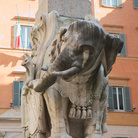 Elefantino della Minerva (Pulcino della Minerva)
Gruppo scultoreo
Elefantino della Minerva (Pulcino della Minerva)
Gruppo scultoreo
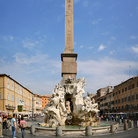 Fontana dei Fiumi
Affresco
Fontana dei Fiumi
Affresco
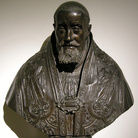 Busto di papa Gregorio XV Ludovisi
1622 | Bronzo | 75 x 69 cm.
Busto di papa Gregorio XV Ludovisi
1622 | Bronzo | 75 x 69 cm.
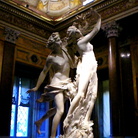 Apollo e Dafne
1622 | Statua
Apollo e Dafne
1622 | Statua
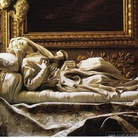 Beata Ludovica Albertoni
1670 | Statua
Beata Ludovica Albertoni
1670 | Statua
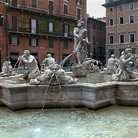 Fontana del Moro
1574 | Affresco
Fontana del Moro
1574 | Affresco
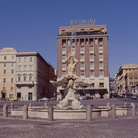 Fontana del Tritone
1642 | Affresco
Fontana del Tritone
1642 | Affresco
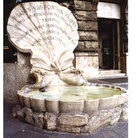 Fontana delle Api
1644 | Affresco
Fontana delle Api
1644 | Affresco
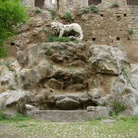 Fontana del Leone
Affresco
Fontana del Leone
Affresco
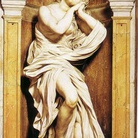 Santa Maria Maddalena
1663 | Statua
Santa Maria Maddalena
1663 | Statua
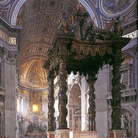 Baldacchino
1624 | Opera architettonica
Baldacchino
1624 | Opera architettonica
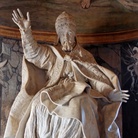 Monumento Funebre di Urbano VIII Barberini
1628 | Sepolcro
Monumento Funebre di Urbano VIII Barberini
1628 | Sepolcro
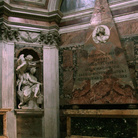 Abacuc e l'Angelo
1656 | Gruppo scultoreo
Abacuc e l'Angelo
1656 | Gruppo scultoreo
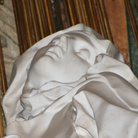 Estasi Santa Teresa
1647 | Gruppo scultoreo
Estasi Santa Teresa
1647 | Gruppo scultoreo
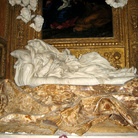 Estasi Ludovica Albertoni
1671 | Gruppo scultoreo
Estasi Ludovica Albertoni
1671 | Gruppo scultoreo
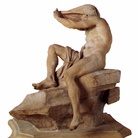 Bozzetti per la Fontana dei Quattro Fiumi
1648 | Statua
Bozzetti per la Fontana dei Quattro Fiumi
1648 | Statua
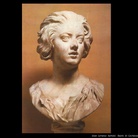 Busto di Costanza Bonarelli
1636 | Statua | 72 x 0 cm.
Busto di Costanza Bonarelli
1636 | Statua | 72 x 0 cm.
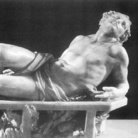 Martirio di San Lorenzo
1616 | Statua | 66 x 108 cm.
Martirio di San Lorenzo
1616 | Statua | 66 x 108 cm.
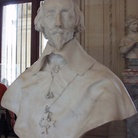 Busto del Cardinale Richelieu
1640 | Busto | 80 x 0 cm.
Busto del Cardinale Richelieu
1640 | Busto | 80 x 0 cm.
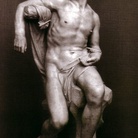 San Sebastiano
1617 | Gruppo scultoreo
San Sebastiano
1617 | Gruppo scultoreo
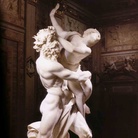 Ratto di Proserpina
1621 | Gruppo scultoreo | 109 x 255 cm.
Ratto di Proserpina
1621 | Gruppo scultoreo | 109 x 255 cm.
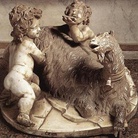 Capra Amaltea
1615 | Gruppo scultoreo
Capra Amaltea
1615 | Gruppo scultoreo
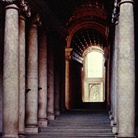 Scala Regia in Vaticano
Bassorilievo marmoreo
Scala Regia in Vaticano
Bassorilievo marmoreo
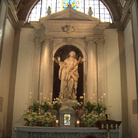 Santa Bibiana
1626 | Statua
Santa Bibiana
1626 | Statua
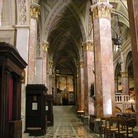 Altare del Santuario di N.S. della Misericordia
Olio su tela
Altare del Santuario di N.S. della Misericordia
Olio su tela
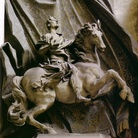 Costantino
1669 | Statua
Costantino
1669 | Statua
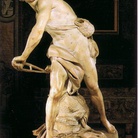 David
1623 | Statua
David
1623 | Statua
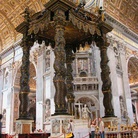 Baldacchino di San Pietro
Olio su parete
Baldacchino di San Pietro
Olio su parete
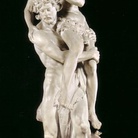 Enea, Anchise e Ascanio
1618 | Gruppo scultoreo
Enea, Anchise e Ascanio
1618 | Gruppo scultoreo
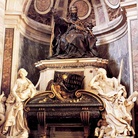 Monumento sepolcrale di Urbano VIII
1628 | Statua
Monumento sepolcrale di Urbano VIII
1628 | Statua
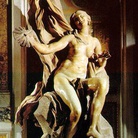 La verità svelata dal Tempo
1645 | Statua
La verità svelata dal Tempo
1645 | Statua
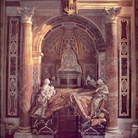 Sepolcro di Alessandro VII
1672 | Sepolcro
Sepolcro di Alessandro VII
1672 | Sepolcro
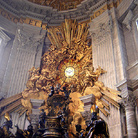 Cattedra Lignea di San Pietro
1666 | Cattedra Lignea
Cattedra Lignea di San Pietro
1666 | Cattedra Lignea
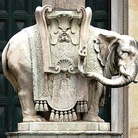 Elefante Obeliscoforo
1665 | Statua
Elefante Obeliscoforo
1665 | Statua
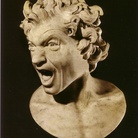 Anima Dannata
1619 | Busto
Anima Dannata
1619 | Busto
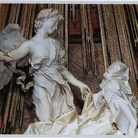 Cappella Cornaro
1644 | China acquarellata su carta foderata
Cappella Cornaro
1644 | China acquarellata su carta foderata
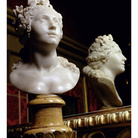 Anima Beata
1619 | Busto
Anima Beata
1619 | Busto
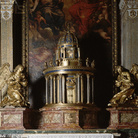 Altare del Santissimo Sacramento
Olio su tela
Altare del Santissimo Sacramento
Olio su tela
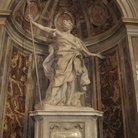 San Longino
1628 | Statua
San Longino
1628 | Statua
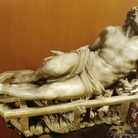 San Lorenzo sulla graticola
1614 | Statua
San Lorenzo sulla graticola
1614 | Statua
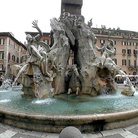 Fontana dei Quattro Fiumi
1648 | Affresco | 30 x 0 cm.
Fontana dei Quattro Fiumi
1648 | Affresco | 30 x 0 cm.
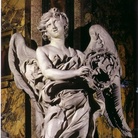 Angelo con la Corona di Spine
1667 | Statua
Angelo con la Corona di Spine
1667 | Statua
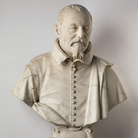 Busto di Antonio Cepparelli
1622 | Busto
Busto di Antonio Cepparelli
1622 | Busto
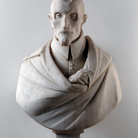 Busto di Antonio Coppola
1612 | Busto
Busto di Antonio Coppola
1612 | Busto
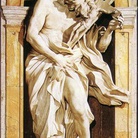 San Girolamo
1663 | Statua
San Girolamo
1663 | Statua
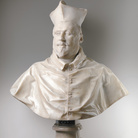 Busto di Scipione Borghese
1631 | Busto
Busto di Scipione Borghese
1631 | Busto
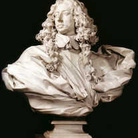 Busto di Francesco I d'Este
1638 | Olio su tela
Busto di Francesco I d'Este
1638 | Olio su tela
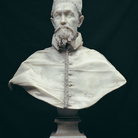 Busti di Innocenzo X
Busto
Busti di Innocenzo X
Busto
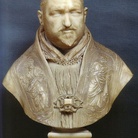 Busto di Paolo V
1617 | Busto
Busto di Paolo V
1617 | Busto
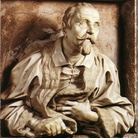 Busto di Gabriele Fonseca
1675 | Busto
Busto di Gabriele Fonseca
1675 | Busto
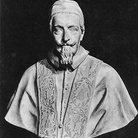 Busto di Alessandro VII
Busto
Busto di Alessandro VII
Busto
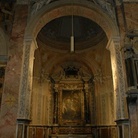 Cappella Raimondi
China acquarellata su carta foderata
Cappella Raimondi
China acquarellata su carta foderata
Map
